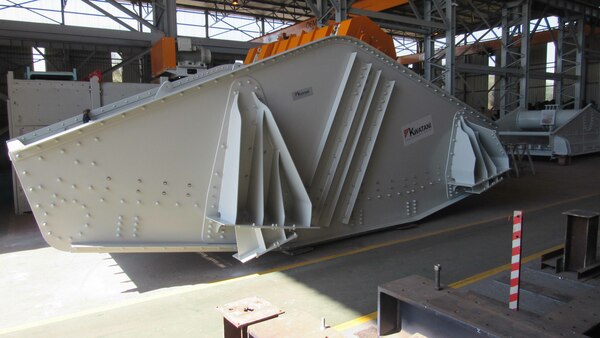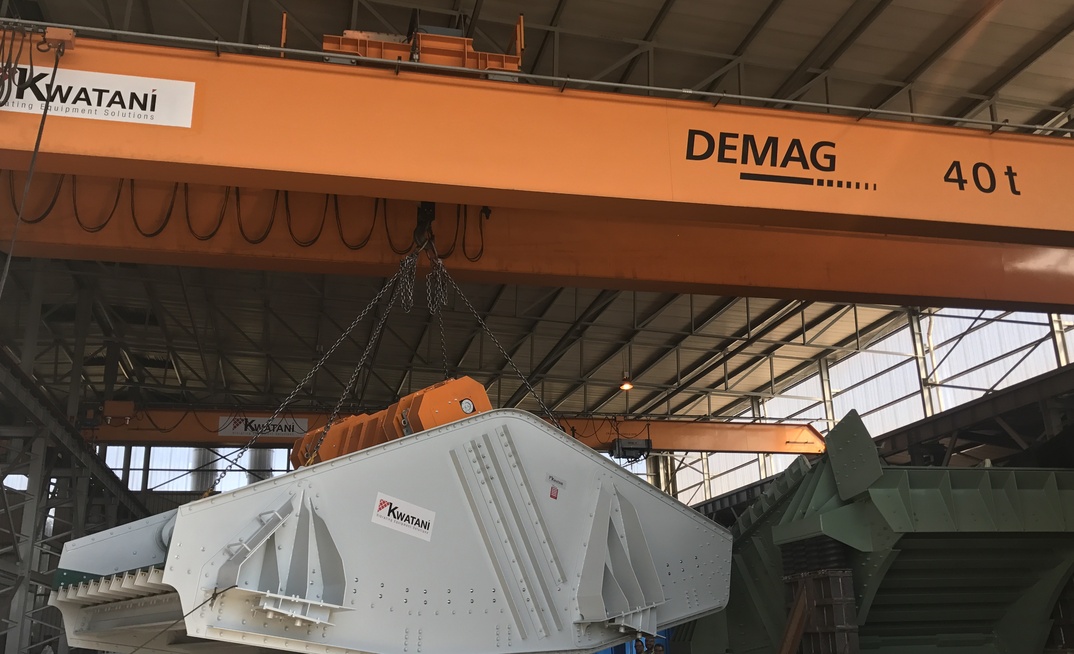Schoepflin explains: "Multi-slope screens have been in use since the 1970s and have a significant reference base, becoming very fashionable mainly because of the benefit they offered in terms of higher velocity leading to higher capacity."
At the top of these screens is usually a first slope with a deck angle of at least 35° - allowing material velocities of over 3m/s - curving down to end at about 10°. This original layout, however, is not always ideal for many operations today.
"When we design a banana screen at Kwatani, we are careful to understand exactly what the application is, so that we can align the number of slopes as well as change the angles of each slope to achieve better efficiencies," says Schoepflin. "In this way, we have been very successful placing these designs in diamond and coal applications, mainly in dense media circuits as well as for diamond scrubber plants for degritting."
Failure to adapt the design appropriately to the application can lead to several challenges, says Kenny Mayhew-Ridgers, COO of Kwatani. He comments: "Material velocity is exponentially linked to the wear rate of the panels, and this high panel wear will lead to frequent and costly maintenance."
Another design strategy to reduce panel wear is to create a more continuous curvature profile along the screen, with a higher number of slopes making for a gradual change of direction for material. This is based on the simple principle that the greater the change of direction, the more the panel will wear.
Mayhew-Ridgers says: "Insufficient drainage of water can also be an issue at these high deck angles, particularly with apertures of less than 1mm which most are. Where retention time on the screen is low, there could be too much carry-over of water to the next phase of processing, with wet product going onto conveyors and into silos, creating various problems related to moisture content."
Schoepflin highlights that, in dense media processes, it is also important to recover as much of the medium - such as magnetite - as possible, which the steep slope may not allow. To maximise recovery of the dense medium, the slope and material velocity may need to be reduced.
"The feed arrangements are also critical, as the material is being fed onto a steep angle," she says. "The material needs to be fed at a low velocity onto the screen, and the application of water needs to be carefully controlled."
A cost aspect that needs to be considered is that the physical height of a banana screen layout can also add to the screen infrastructure, as this structure also needs to be heightened. In addition, this height can make the screen more difficult to access for maintenance purposes. All these factors need to be considered by a user when deciding upon whether a multi-slope screen is optimal and - if it is - exactly how the design needs to be fine-tuned.

A completed Kwatani banana screen ready for dispatch to a customer
























